Stuart Forster travels to Kerala houseboating on the backwaters and experiencing a digital detox while gliding between Fort Kochi and Alappuzha in southern India.
Disclosure: Some of the links below and banners are affiliate links, meaning, at no additional cost to you, I will earn a commission if you click through and make a purchase.
Stress is a distant memory as we glide, in defiance of the passage of time, in a houseboat on Kerala’s placid backwaters.
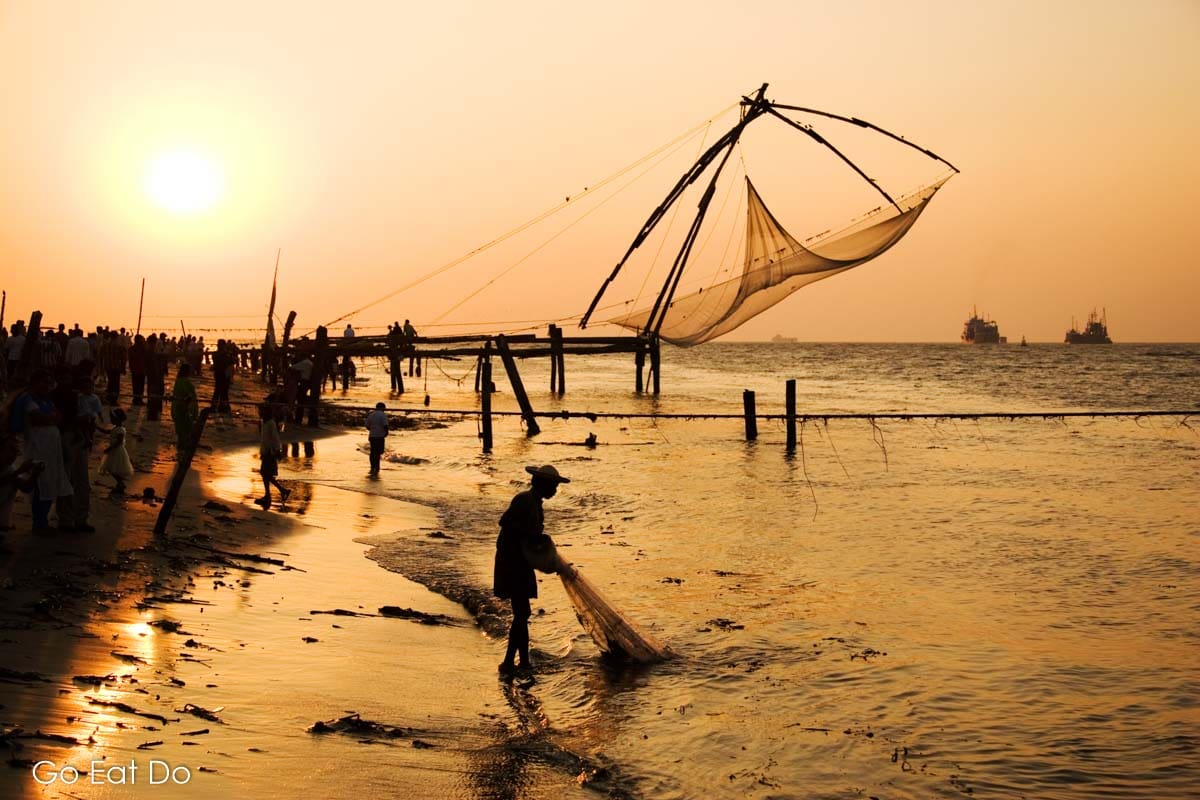
Kerala houseboating experiences
For centuries people survived aboard these vessels without watches, mobile phones and laptops. For the three-day duration of this trip, I’ve packed mine away. I’ve pledged to undertake a digital detox and not so much as glance at an electronic device.
This allows me to focus on the verdant scenery as we sail slowly southward between Kochi and Alappuzha. By road, 53 kilometres (33 miles) and just over an hour’s travelling time separate the two cities in south India.
Trucks now zip along carrying locally produced goods including rubber, rice and spices. Those wares were formerly transported in these boats, vessels known as kettuvallam in Malayalam, the local language.
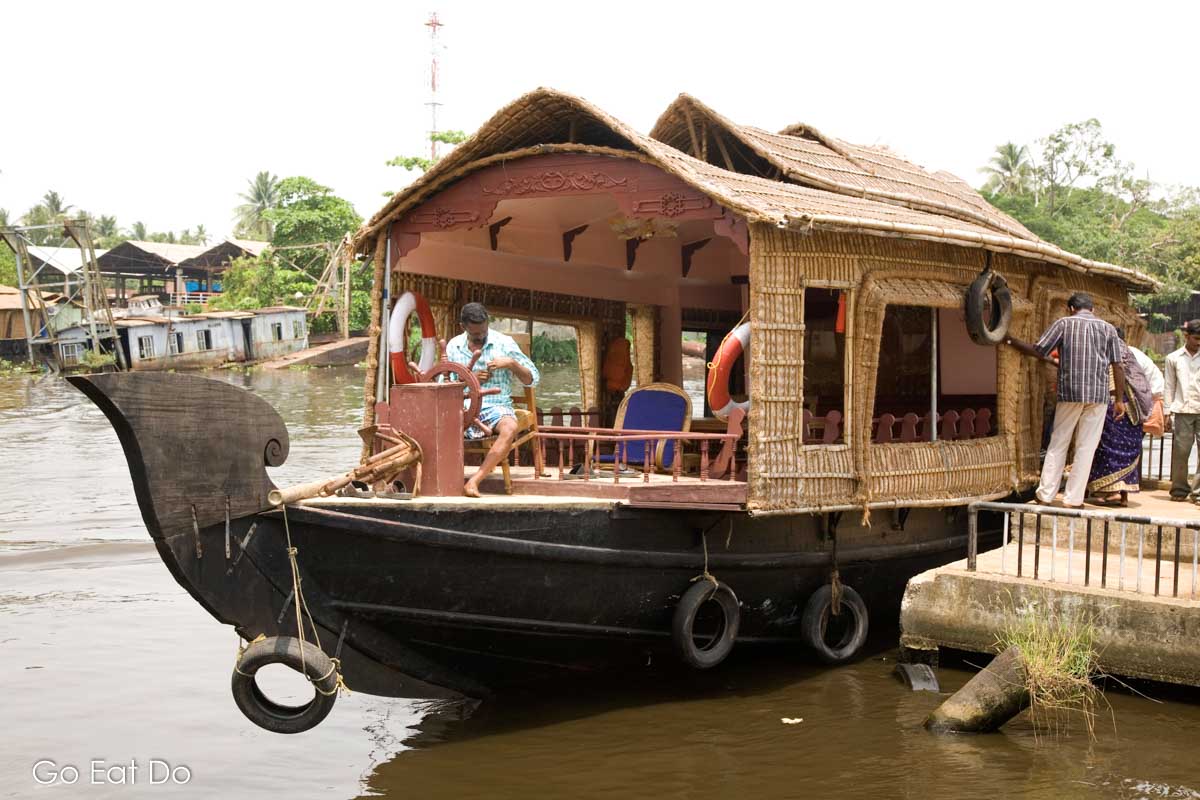
The houseboat in Kerala
“Kettu means ‘to tie’ and vallam means ‘boat’ in our language,” explains Abhey, the easy-going skipper of my boat.
“Look around but you won’t find a single nail on board,” he says. “These boats were made using coir rope to bind planks of jack wood. Cashews were boiled down into a black resin to treat and preserve the wood of the hull, that’s why it looks like mahogany. Some of the boats you’ll see today were afloat in my grandfather’s day.”
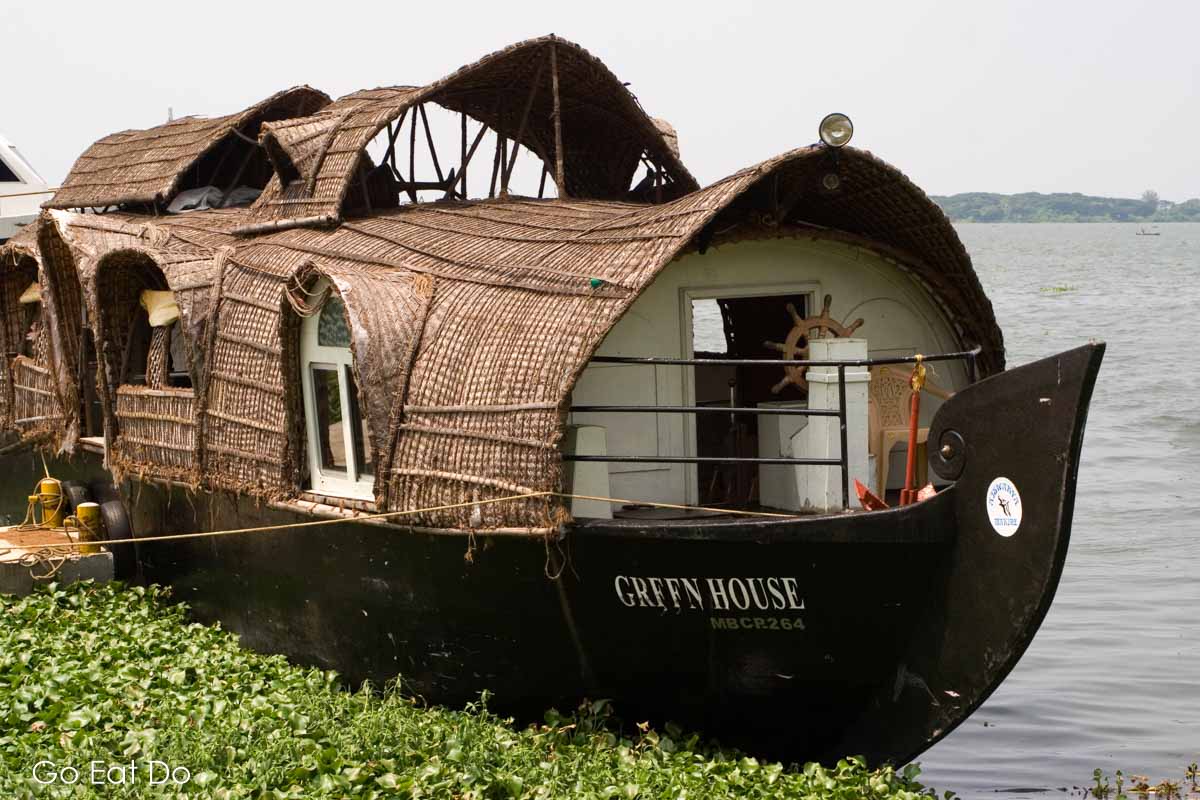
Fresh, tender coconut
Over on the bank, just meters away, a man shimmies up one of the palm trees jutting out over the water’s edge. Using a sickle he harvests a bunch of pale green coconuts. On seeing me he smiles. I shout to him, asking if he has any for sale; he answers to the affirmative. Abhey steers us alongside a nearby jetty and we do business. The harvester slices into the top of a coconut and I savour the cool, mildly salty juice within. Refreshments rarely come any fresher.
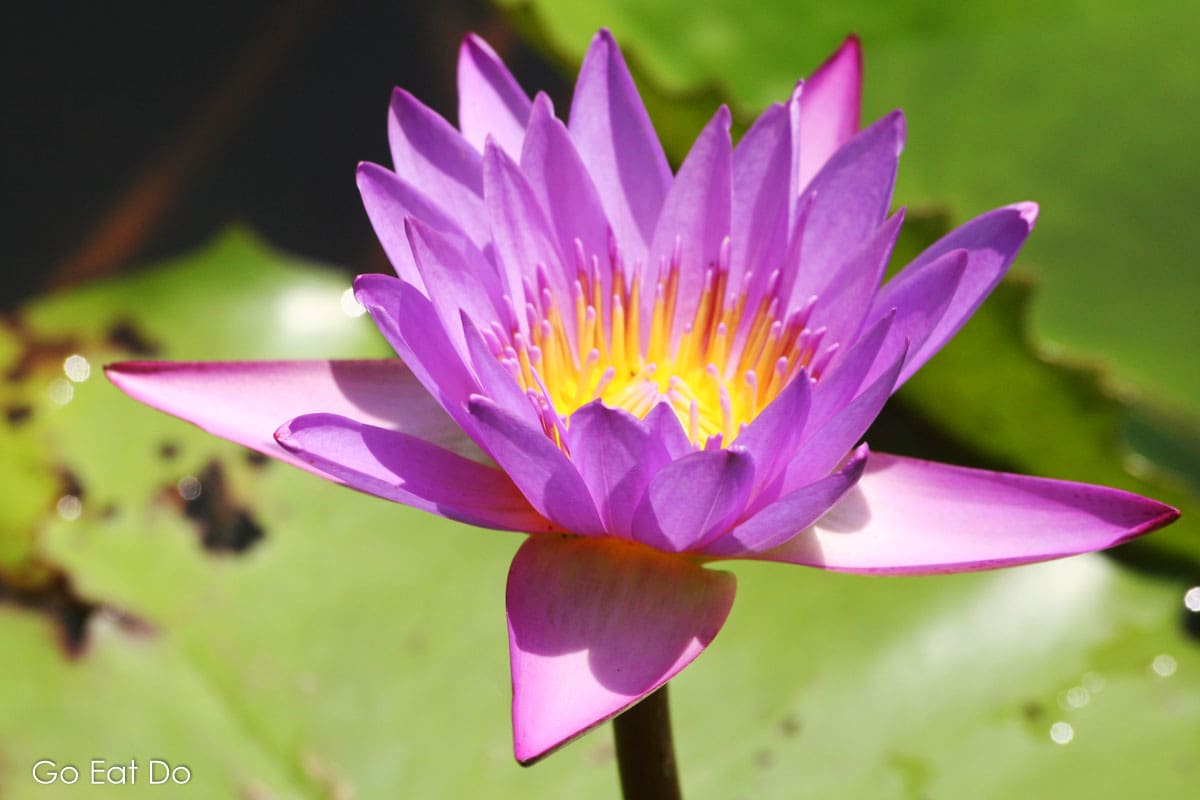
We’re travelling without a motor. A crew member is propelling us with a long bamboo pole, known as a kuzhukol, just as people would have done in bygone days when these boats carried up to 30 tonnes of freight towards the region’s ports.
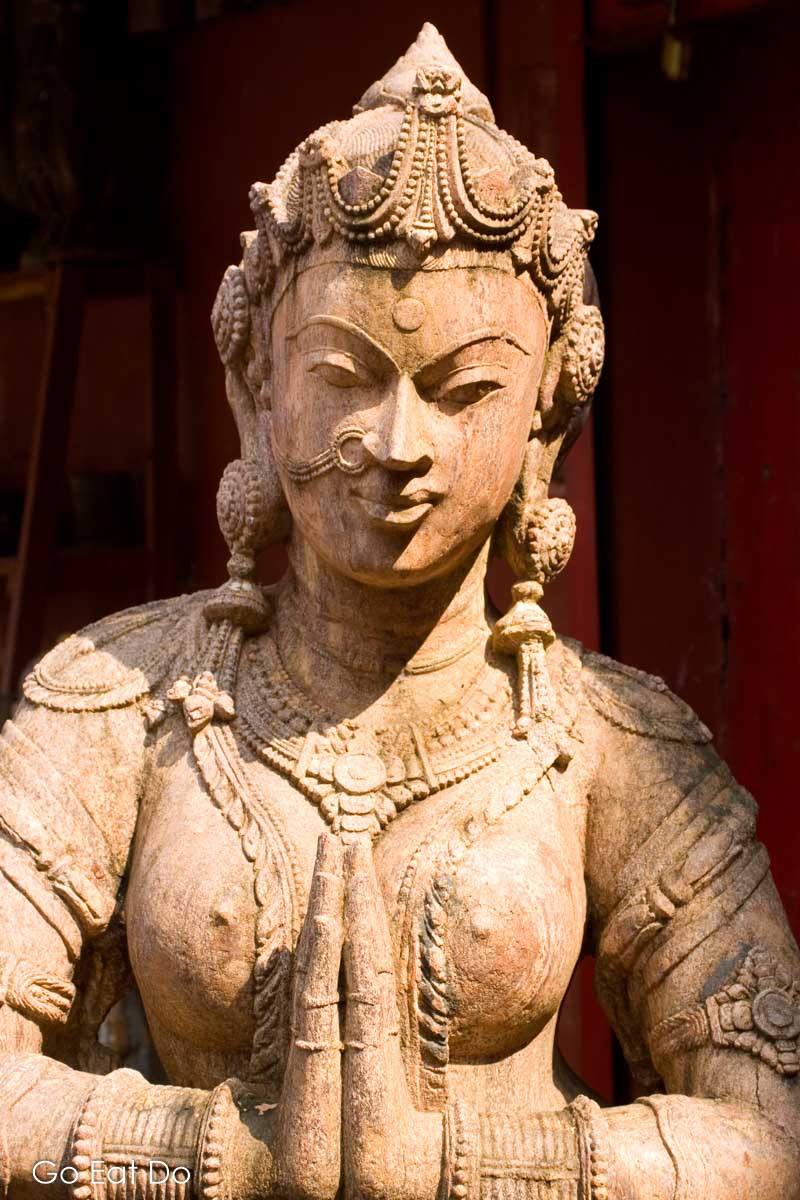
Carrying tourists is a relatively recent development but I can see why they’ve become popular. The tranquillity allows us to listen to palm leaves rustling in the breeze and the song, screeching and warbling of every bird.

Kumarakom Bird Sanctuary
“If you enjoy bird spotting we can sail by Kumarakom Bird Sanctuary,” suggests Abhey, seeing me transfixed by the sight of a brightly coloured kingfisher perched on a waterside branch.
“Early morning is the best time. That’s when the birds are most active. If you want, you can take a walk there. The sanctuary covers 14 acres, but I prefer the view from my deck. Sitting here I’ve seen teal, Siberian cranes, sea eagles and egrets. Birds fly all the way from Europe and Russia to nest at Kumarakom…just as the tourists do these days,” he adds with a toothy grin, referencing the popularity of the district’s Ayurvedic resorts, which are known for their range of massage treatments.
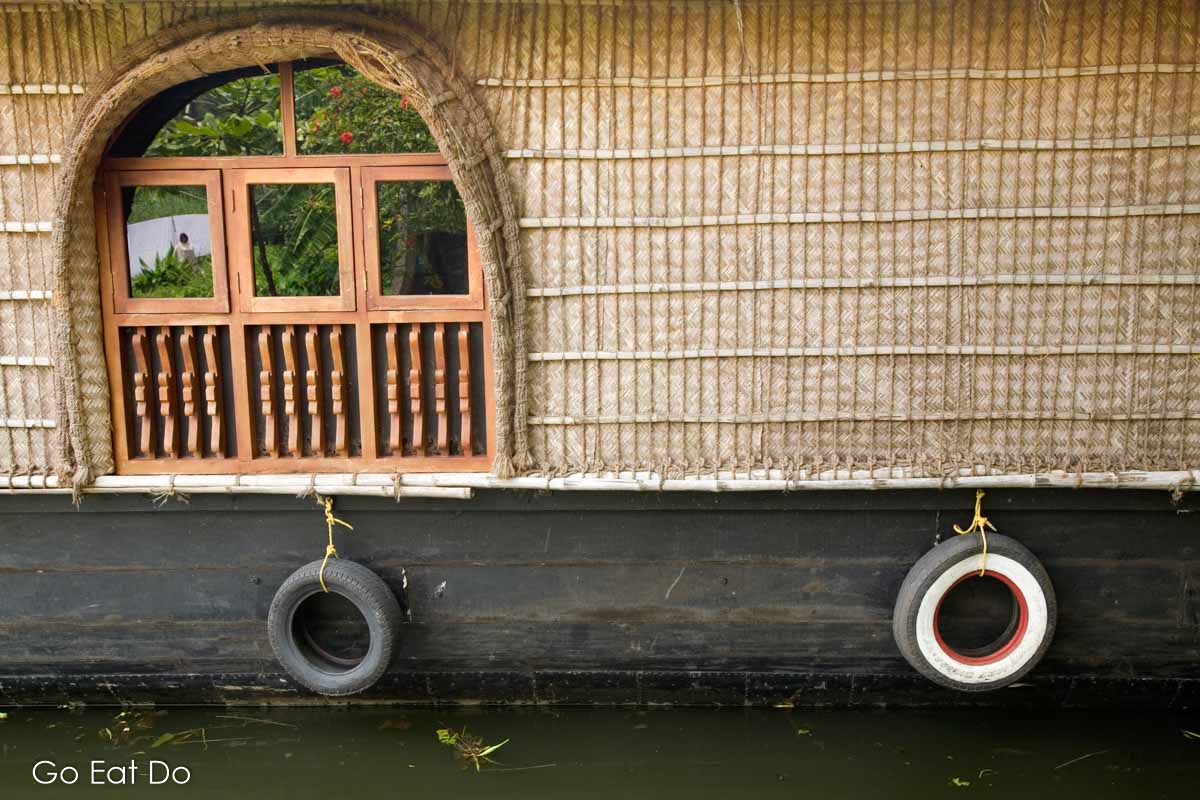
Bird watching at Pathiramanal Island
“We can also stop at Pathiramanal Island. That’s also good for birdwatching, with almost 100 species, depending on when you visit,” says my captain with knowledgeable enthusiasm. He tells me how the island is uninhabited these days, though fishermen lived there until the 1970s.
A motorised houseboat approaches from the opposite direction. Its high wooden prow is reminiscent of the shape of a Viking longboat and the open, straw-coloured hatches of the boat’s domed living area remind me of the gun portals on an ancient warship.
The people aboard are friendly, waving cheerily from seating in the open-sided, shaded area behind their captain’s wheel. While Abhey appears to be comfortable in the sun, their skipper holds a black umbrella to provide himself with respite.

A houseboat on Kerala backwaters
I’m impressed by the onboard comfort level. The thatched bamboo matting of the vallavara, the dome over the bedrooms, bathroom and kitchen, is by no means indicative of simplicity within. The rooms are air-conditioned and the furnishings polished dark wood, while coir matting hints at the region’s eco-friendly heritage.
Artwork depicting a colourfully made-up kathakali performer stands above the wash basin, reminding me of the traditional dance-drama performance I viewed in Kochi the night before setting sail.
We navigate along a narrow channel, passing local people in front of their houses and children playing. One lad sees an opportunity to impress us and somersaults into the water, grinning as he resurfaces. A couple of his friends leap through the air – like practitioners of kalaripayattu, the region’s ancient martial art – before splashing down and laughing.
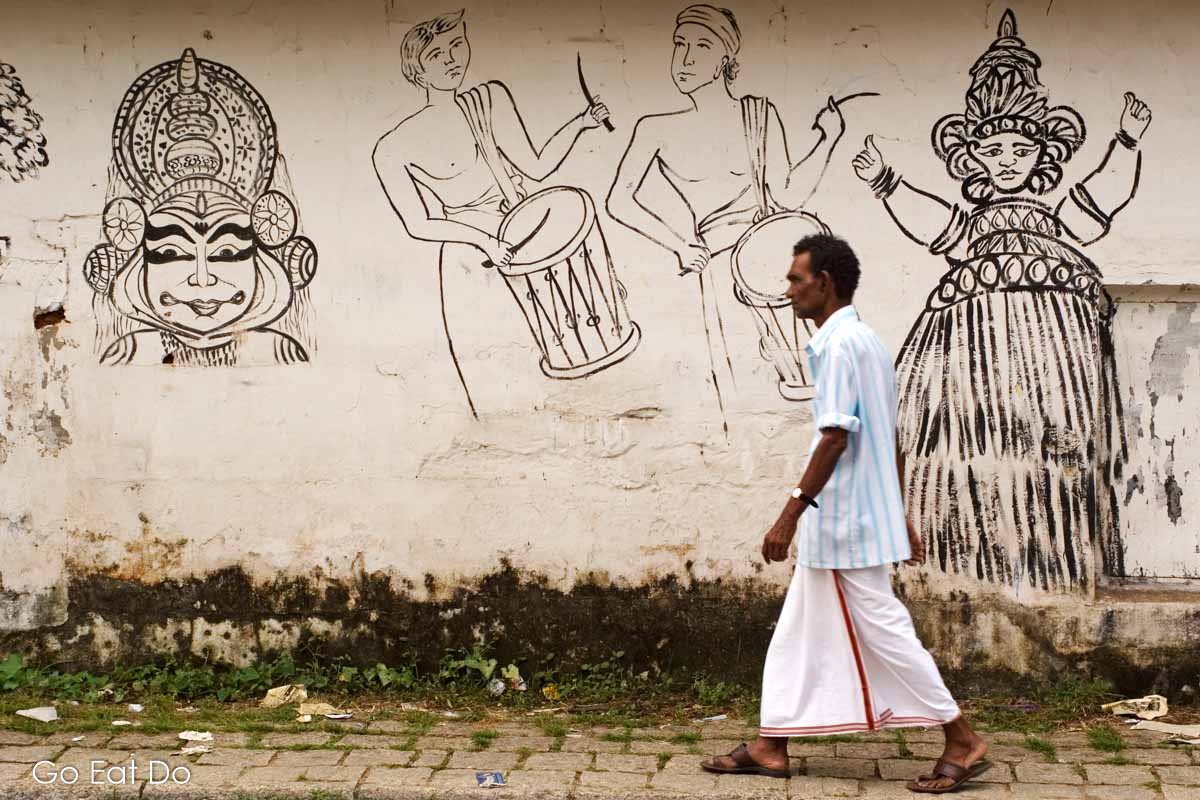
The cuisine of Kerala
The aroma of spices and fish cooking on shore mingles with the scent of food being prepared by our cook, Pradeep, making me peckish. He was angling earlier from the side of the boat and I’m intrigued as to whether he hooked the fish himself.
Maybe our dinner was caught in one of the Chinese fishing nets that we’ve seen. The vast cantilever structures made of bamboo are operated by teams of men on the shoreline. They were introduced to Kerala by Chinese explorers in the early 15th century.
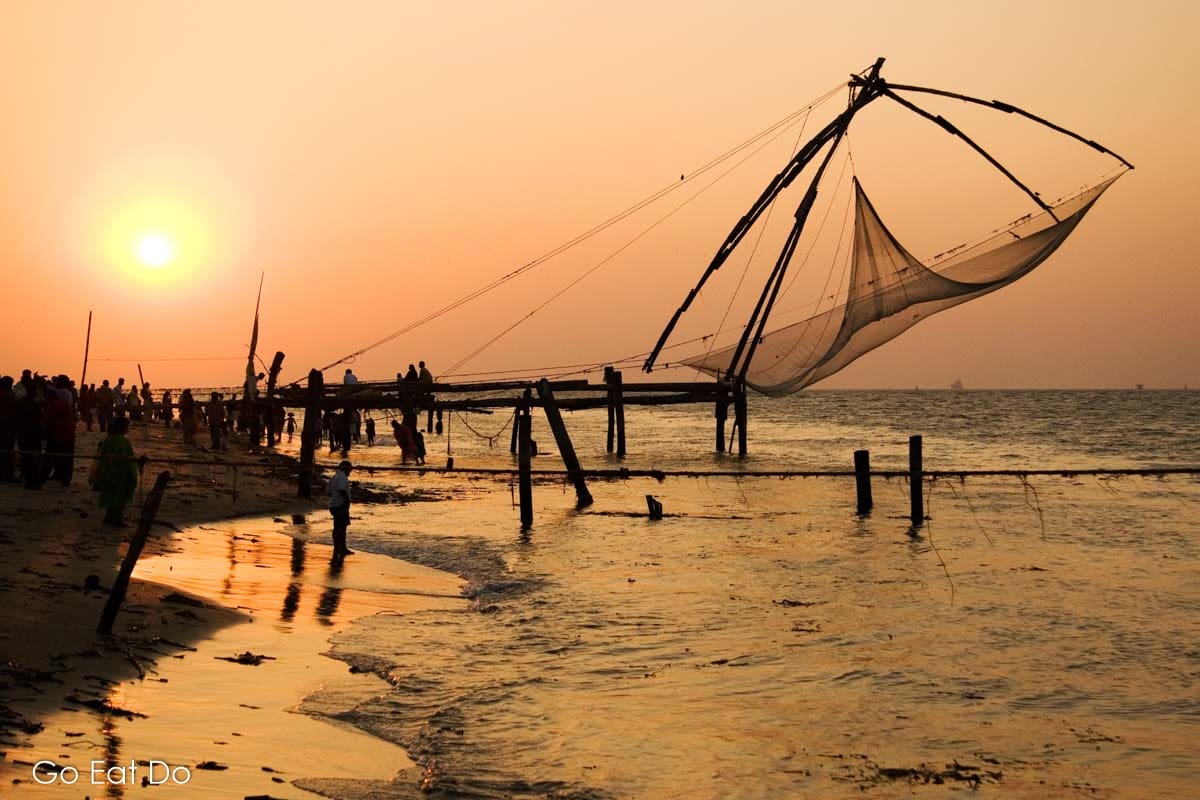
As the sky turns gold, Abhey brings our boat to rest for the night and Pradeep calls us to dinner. Aromatic fish and crab dishes are served with white rice and soft, flaky parottas.
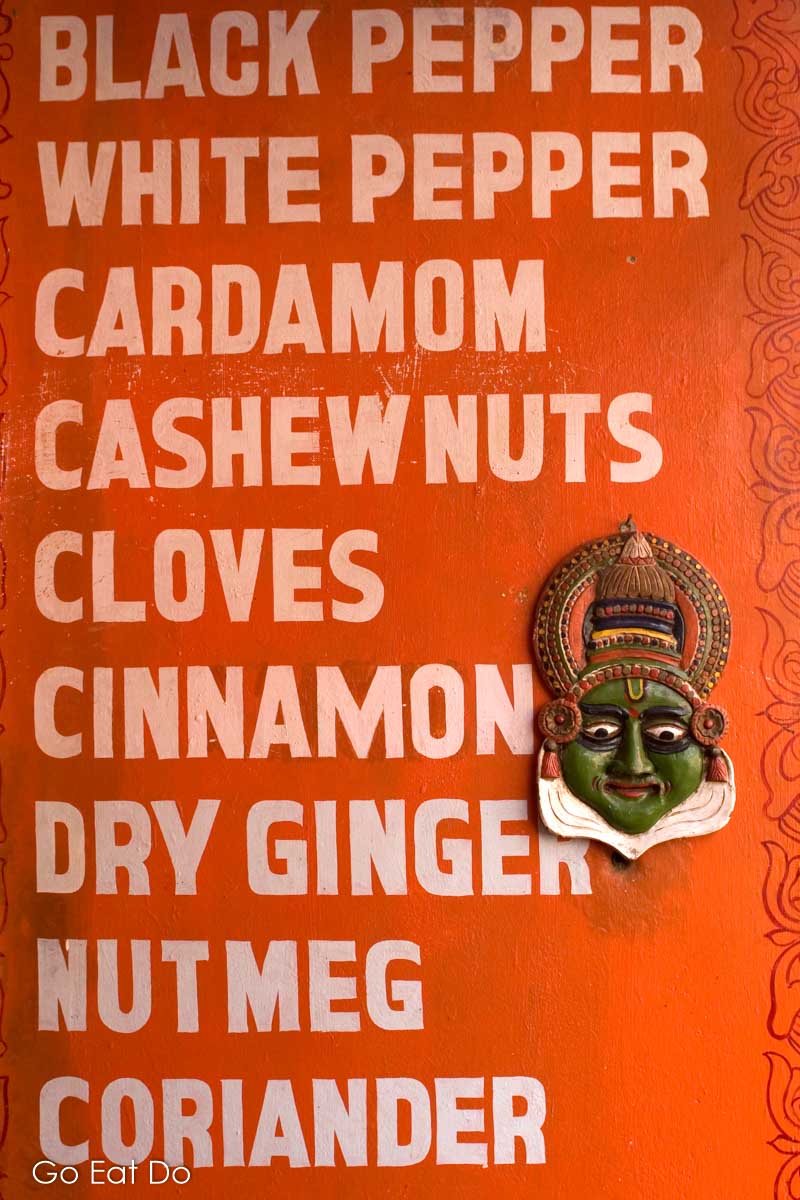
I’m enjoying the Keralan pace of life and feel like I have all the time in the world to enjoy Kerala’s traditional cuisine and heritage.
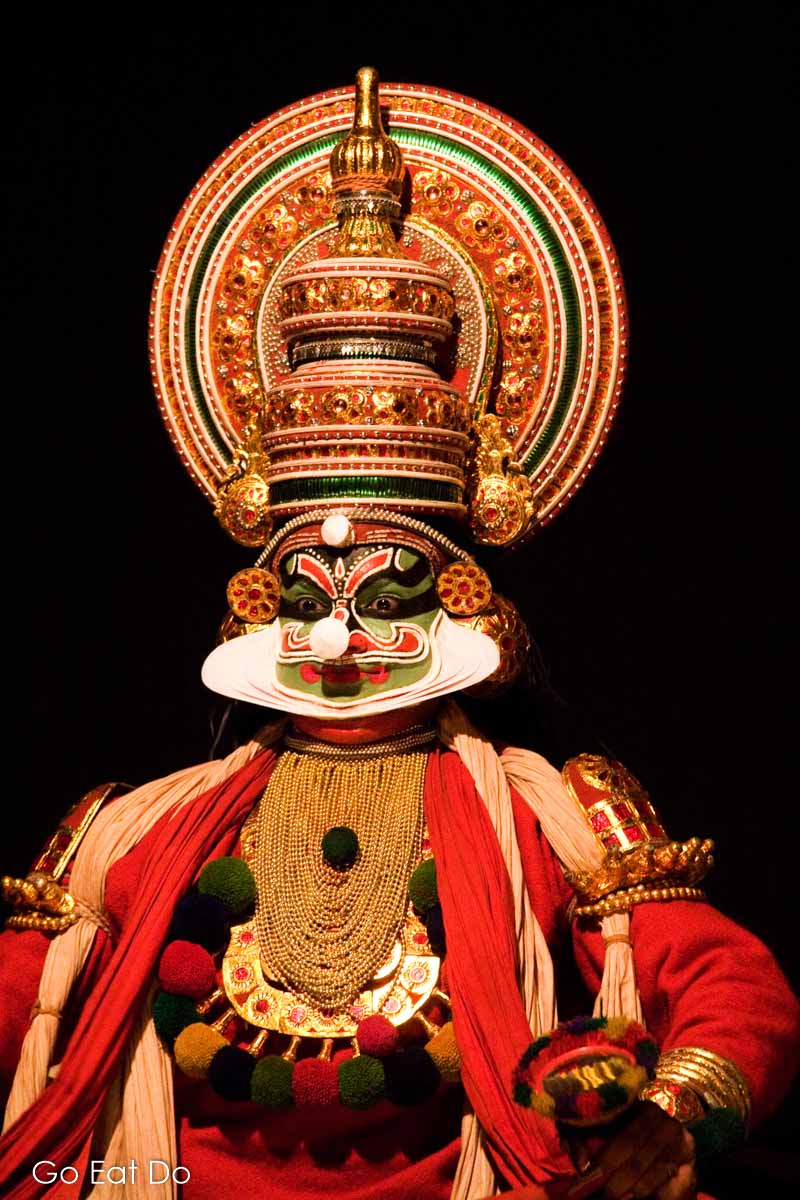
Travel to Kerala, India
Cochin International Airport is the principal gateway to Kerala’s backwaters. Air India, Emirates, Etihad, Qatar and SriLankan count among the airlines offering flights between London Heathrow and Cochin.
The Google Map of Kochi, Kerala, shows the location of the city. Zoom into the map to see details or out to see more of the southern Indian state:
Hotels in Kochi, Kerala
Planning to travel on the backwaters of Kerala? Look for hotels in Kochi, Kerala via Booking.com:
Books about Kerala and India
Planning to travel in Kerala? You may find the following books useful:
Lonely Planet South India and Kerala guidebook:

The Essential Kerala Cookbook by Kannampilly Vijayan:

History of Kerala: Prehistoric to the Present:


Further information
See the Kerala Tourism and Incredible India websites for more information about travel and tourism in Kerala and South India.
Photos illustrating this post are by Why Eye Photography.
Thank you for visiting Go Eat Do and reading this post about houseboating on the backwaters of Kerala, India. If you are planning a trip to India you may also enjoy these posts about South India’s Golden Chariot luxury train and Nilgiri Mountain Railway in southern India.
Stuart Forster, the author of this post, lived in India and is a travel writer. He contributed to Stark World Publishing’s Kerala guidebook.
If you enjoyed this post why not sign up for the free Go Eat Do newsletter? It’s a hassle-free way of getting links to posts on a monthly basis.
‘Like’ the Go Eat Do Facebook page to see more photos and content.
A version of this post was initially posted on Go Eat Do on 19 January 2015.
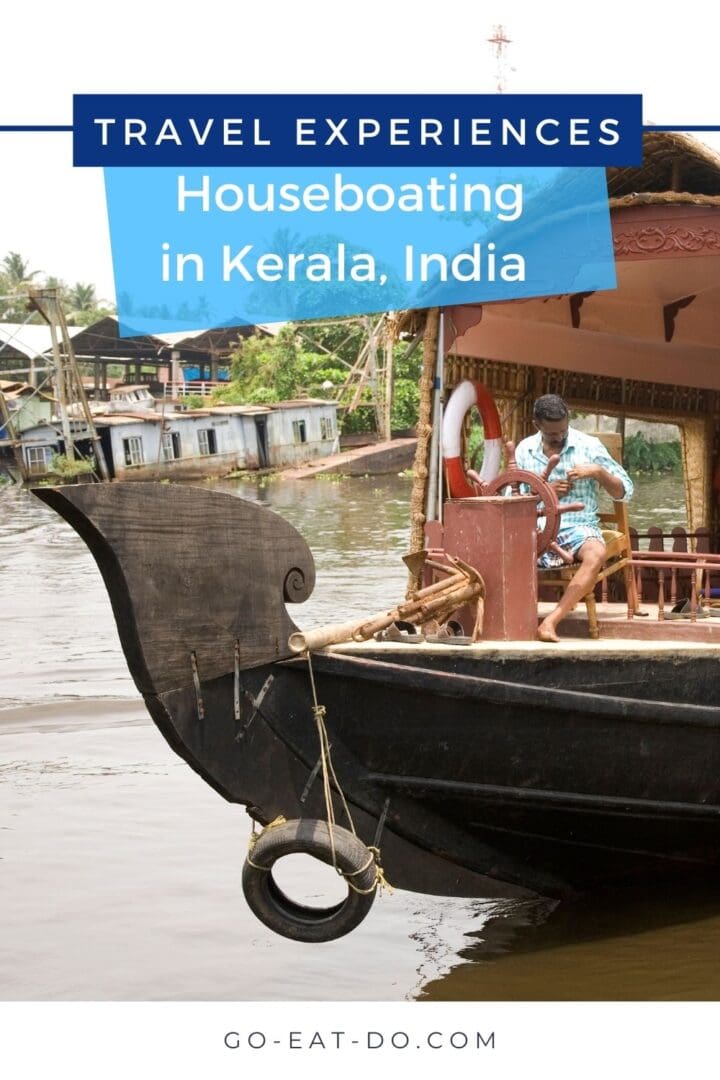



Kavita Favelle
August 15, 2020 at 10:02Which company operated the trip and boat you took here please?
Go Eat Do
August 24, 2020 at 09:10I believe it was Sree’s Tours (my partner made the booking as a surprise).